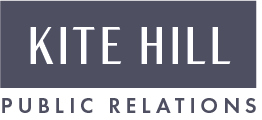In recent years, most agencies and tech companies have implemented flexible work from home (WFH) plans. While it’s common practice, at least among my peers, to take a few WFH days per month or quarter, I don’t think any of us were expecting to be WFH for such a long period of time because of COVID-19. Don’t get me wrong; I’m happy to have some extra time at home. But there are aspects of office life that I miss.
As someone who is newer to the industry, I try to make as much time for professional development as I can. Now that the novelty of working from home for weeks on end has worn off, I find myself missing networking events or meeting new reporters. I’ve taken the last week and a half to think about how I could continue my own professional development - while remote. To my surprise, it wasn’t as difficult as I imagined. Here are my recommendations.
Subscribe to new podcasts.
Morning Brew’s Business Casual
I’ve been a fan of Kite Hill PR client Morning Brew since I was in college and became even more obsessed when the media brand launched its weekly podcast, Business Casual. Morning Brew has been releasing bonus episodes amidst COVID-19, further feeding my obsession. The podcast dives deep into the biggest issues in today’s business world and features executives from Lemonade, Classpass, Bombas and most recently, entrepreneur Mark Cuban.
While I have a mentor at Kite Hill, I started listening to this podcast recently and it’s been a great resource for additional support. Now, only two years into my career and I have seen continued growth as a communicator and leader. With nearly 600 episodes that range from 5-20 minutes, it’s a great add on for those looking to get a little bit more guidance on their professional development.
AdExchanger’s Social Distancing with Friends
Similar to Business Casual, AdExchanger released additional podcasts during COVID-19, breaking cabin fever by talking with the top thought leaders and practitioners in digital and data-driven advertising – all while under social isolation. Hearing candid takes on the industry from different executives has helped me look at the advertising and adtech industry with a more critical lens.
Attend virtual events.
Pre-pandemic, I would get emails to join these webinars and never felt like I had the time, but the other day one of these emails stuck out so I decided to give it a try. I tuned into an Adweek Webinar on ‘Leveling Up Your Adtech’ which discussed how brands can deliver the perfect experience. It was great listening in and hearing industry experts breakdown how marketers and advertisers can deliver authentic and personal messages. It also made the complex adtech industry a bit more digestible, further allowing me to grow in my understanding.
This week, I registered for a webcast that I’m really looking forward to. On April 14, Ad Age’s ‘TV is Changing: Learn What Creative Formats Are Working in This New Landscape’, will cover how the TV landscape is changing, how CTV and OTT audiences differ and how the ad industry needs to approach these audiences. I now find myself more aware of these opportunities to get a deeper understanding of the inner workings of my clients’ industries and am seeing the value of having conversations like these.
Additionally, a lot of companies and business leaders have been hosting AMAs or LinkedIn Q&As, like Tea with Gary Vee. I recommend looking at your favorite brands and companies and see what content they are creating and listen in!
Reignite your passion and register for online classes.
I always said that I’d go back to school and nearly two years out of college I still haven’t made it happen. With the encouragement of my manager, a few weeks before the pandemic, I signed up for an online writing course. I already can see myself catching edits that my managers and supervisors would previously make, as well as writing more succinctly. There is a variety of writing courses out there, depending on what you’d like to tackle.
I am looking forward to being back in the office and going to networking or industry events like I’ve done in the past - but it’s comforting to know that I can still find ways to grow professionally right from my home office.
- Will Vogel, Account Executive



